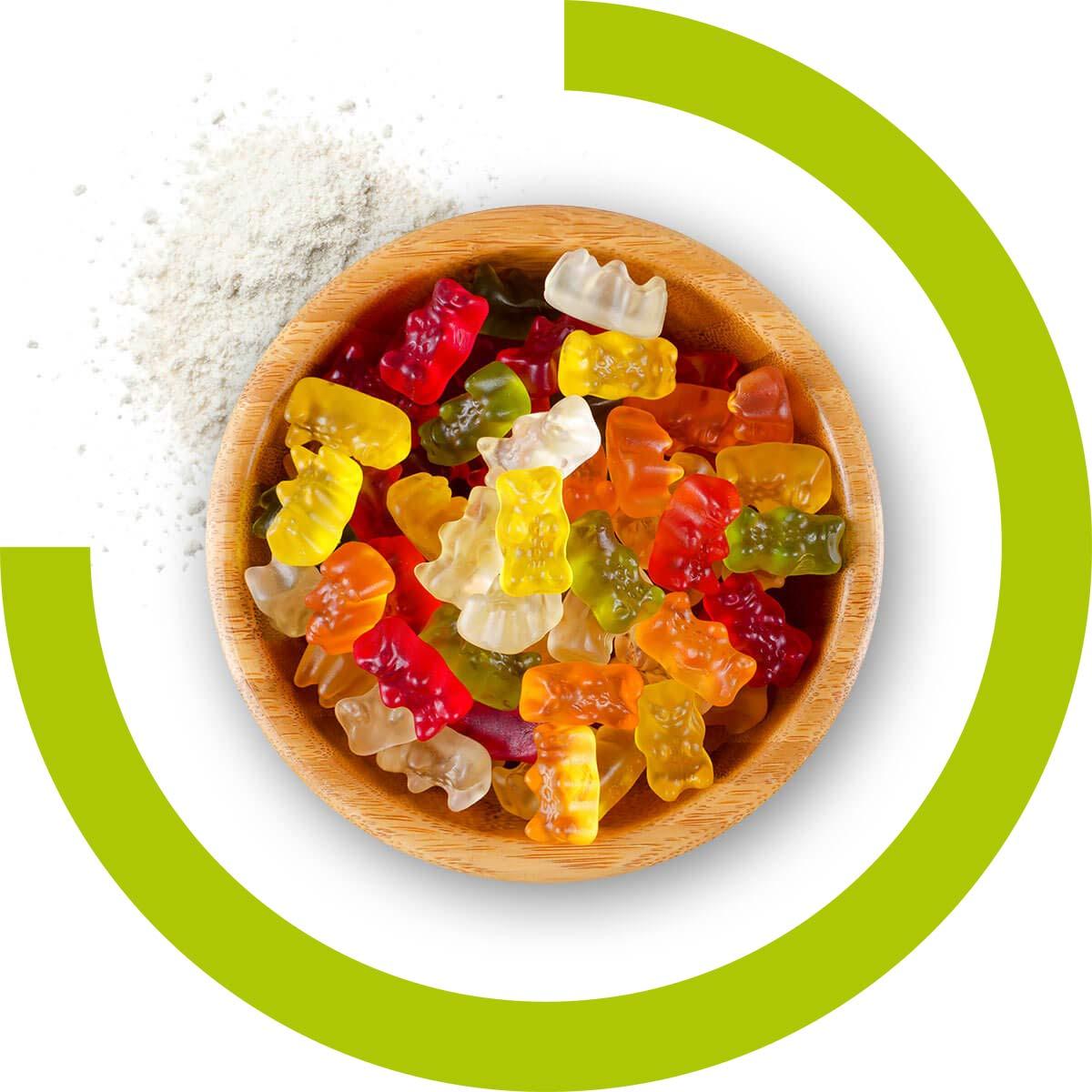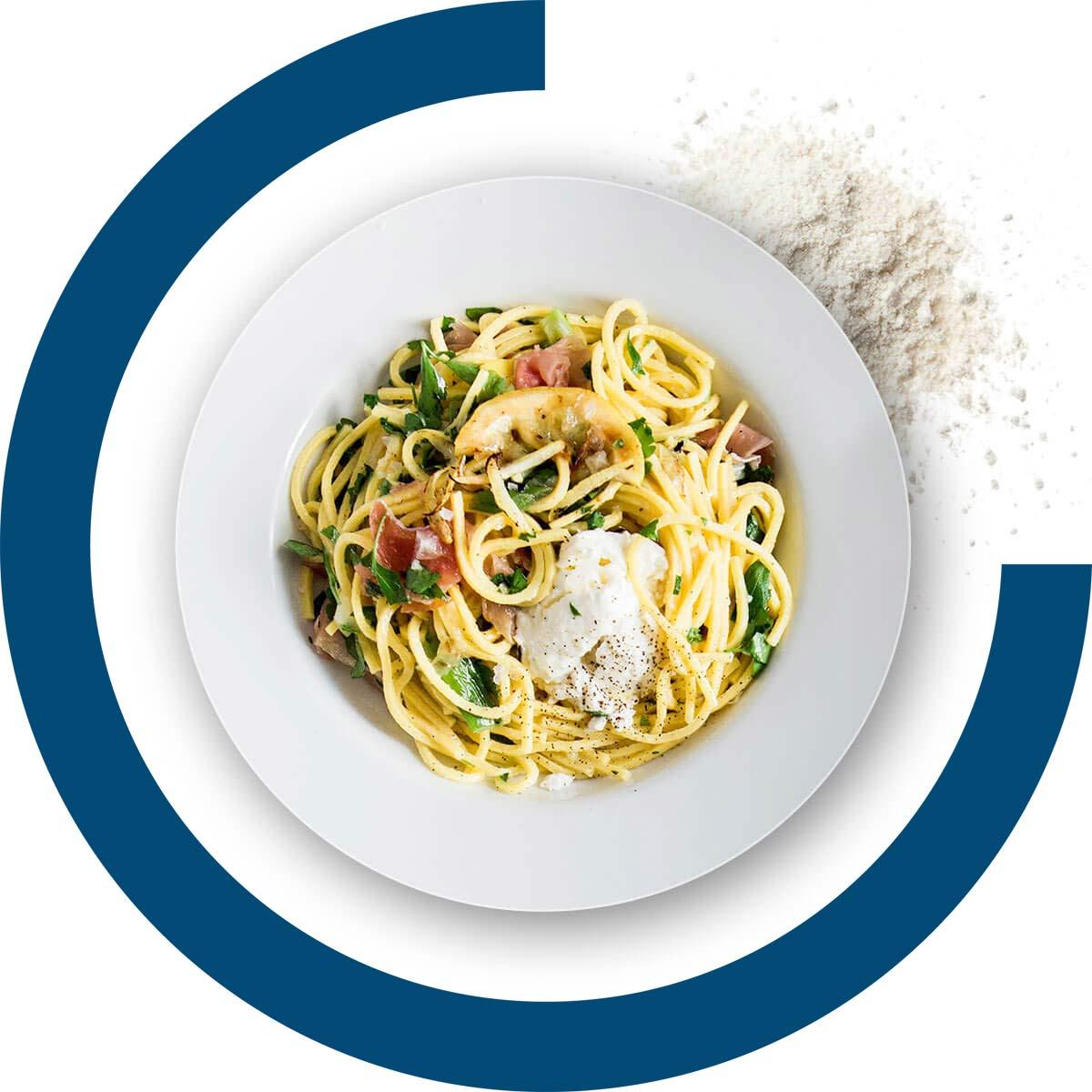Meat & Seafood
Nutritious and easy to use, our pea fibers and starches can be used in a variety of unique applications to enhance meat and seafood products.
Improving Meat Quality
Pea starch is a versatile ingredient that can be used as a gel or coating to enhance the quality of meat and seafood products while saving on costs. With a bland taste, odor and color, pea fiber is equally versatile, and can offer food designers superior water-holding capacity and fat-binding properties, freeze-thaw stability, and improvements to texture, mouthfeel and moistness. Here are just a few recommendations on how to make the most of these functional food ingredients.
Applications At-A-Glance
Centara™ & Uptake 80™ Pea Fiber
- sausages
- pate
- luncheon meat
- beef & chicken patties
- ground beef mixes
- hot dogs
Accu-Gel™ Pea Starch
- luncheon meats & low meat content products
- coatings
- canned meat & seafood
- sausages & reformed meats
Low Meat Content Products
Pea Starch
Pea starch (Accu-Gel™) is an effective solution for reducing the cost and/or increasing the quality of low-meat content products:
- If a product formulation is limited by texture and color, 1-1.5% Accu-Gel can replace 5-10% of mechanically deboned meats (MDM), reducing expense.
- In products made entirely of MDM, 6-9% of MDM can be replaced with 2-3% Accu-Gel and 4-6% more water.
- Cooked rework levels can be increased by 5-7.5% with the addition of 1-1.5% pea starch.
Pea Hull Fiber
With a bland taste, odor and color, pea hull fiber (Centara, Uptake 80) is an unobtrusive solution for a range of food applications. In low-meat products, it can replace fillers like corn, maize or modified starches to improve texture, moistness and mouthfeel.
Canned Fish & Meat Products
Pea Starch
As one of the best gelling starches on the market, Accu-Gel Pea Starch is an excellent solution for canned meats, reformed meats and fish products where a jellied texture is sought after. In these products, pea starch permits improved water control during sterilization. By contrast, canned products made with potato or wheat starch are not stabilized, causing increased water absorption during storage and leading to a soggy and softer meat texture.
Pea Hull Fiber
Luncheon meats can benefit from the addition of pea hull fiber (Centara, Uptake 80), which lengthens shelf life, improves texture and binding, and can impart better mouthfeel and moistness without impacting taste.
Coatings
Manufacturers often rely on coatings to improve moisture, texture and appearance of processed foods. Because of its high amylose content, pea starch has the unique capability to create thin and strong films. Applied in a very thin layer as a hot paste and allowed to dry, Accu-Gel Pea Starch forms a flexible and clear protective layer for a variety of meat and fish applications. Here are just a few ways it can be used:
| Microwaved Chicken Cutlets (Pre-dust w/ 33% Accu-Gel and 67% Resistant Detrin, egg white wash applied; fried @ 195°C, 3 min) | Accu-Gel/dextrin coating reduced fat uptake by 30% compared to the control using wheat flour or when dextrin was used alone. Provided crispier texture even when heated as part of a microwavable meal. |
| Glazed Chicken Breast (fully cooked; applied with glaze) | Less viscous and glossy glaze. Able to thicken at higher usage levels. Increased cook yield (higher glaze pick-up). Improved freeze-thaw stress. |
| Chicken Nuggets (ready to cook; applied with predust; tempura batter) | Significantly crisper and better color development. Improved retention of quality and sensory attributes during extended periods (up to 60 minutes) held under heat lamps. Equivalent or improved sensory attributes, when compared to control nuggets containing wheat and corn ingredients. Increased batter viscosity has the potential to replace gums used as thickening agents in the batter. |
| Fish nuggets (ready to cook; applied with pre-dust, batter, breading) | Improved adherence to surfaces resulting in crispier products containing less oil. Contributed to freeze thaw-stability, allowing foods to better survive distribution and transport. Improved batter adhesion and retention of quality when held under food lamps. Increased cook yield due to increased batter pick-up as the coatings adhered more efficiently to the substrate. |



